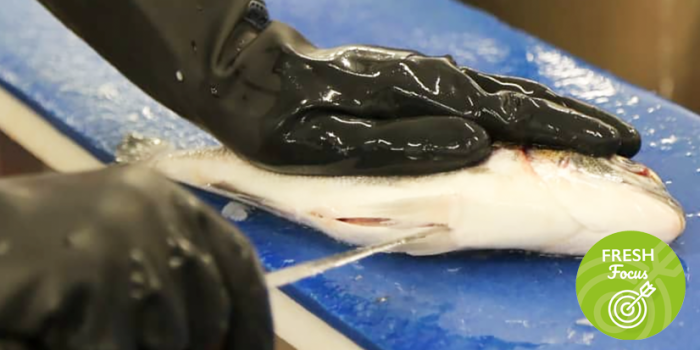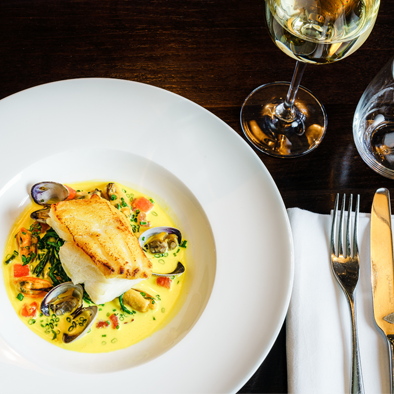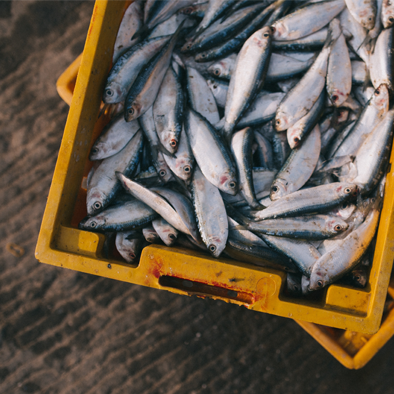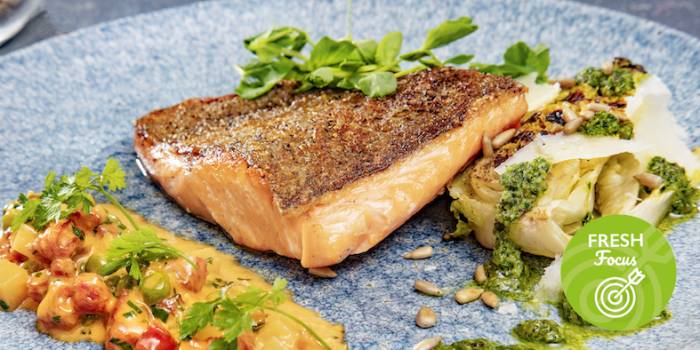It’s not quite throwing money in the bin, but if £18 in every £100 spent by foodservice and catering businesses on food is wasted, the end result is much the same.
The figure comes from the UK’s official waste reduction body, WRAP, which estimates that 18% of the food purchased by the sector is thrown away. In that context, the benefits of reducing food waste can have a very quick impact on the bottom line, especially at a time when every operator understands that managing costs is essential.

There are many ways in which food waste can be reduced, but there are likely to be three key areas of the business where it occurs. Food is wasted when it goes out of date before it can be served; when choppings and peelings generated when food is being prepared in the kitchen isn’t put to other use; or when it is left on the side by customers and scraped into a food waste bin.
As well as the direct cost of food which is bought and thrown away, food waste has additional, hidden costs, such as the additional energy needed to transport, refrigerate and cook ingredients that end up in the bin.
As well as the savings generated by implementing measures to reduce waste, tackling the issue can also have a direct impact on customer choice when it comes to eating and drinking out-of-home. Research for Mintel found that 1 in 5 UK adults would choose a specific dining out venue if it had a focus on sustainability.
WRAP estimates that the hospitality sector accounts for 12% of total UK food waste, and costs the industry more than £3.2 billion a year in terms of food that is paid for but never eaten. In all, WRAP estimates the sector throws away an estimated 1.1 million tonnes of food each year, at least 75% of which could be avoided with more attention and better procedures.


Cutting food waste
The issue has also moved up the agenda for operators with the implementation of stricter legislation that requires food waste to be separated from other business waste, so that it can be collected and treated separately.
This means that minimising the amount of waste that needs to be disposed of delivers a direct cost saving. WRAP has developed the Guardians of Grub campaign to provide hospitality and foodservice operators with advice and resources to help reduce food waste. The campaign has identified three key areas where food waste occurs:
Spoilage: food that it is damaged or out of date.
To tackle spoilage:
◆Smart ordering: Check your stock and purchase only what you need.
◆Savvy storage: Store newer items at the back to ensure older items are used first.
◆Label and date new supplies as they come in. Use airtight containers or cling film to keep ingredients fresh, or freeze it for later use.
Preparation: Food that is thrown away during preparation, such as peelings
To improve preparation:
◆Smart menu: Explore ways of using the same ingredients for different dishes. Use cooking methods that make the most of ingredients. Be creative by using leftover ingredients and offcuts.
◆Essential skills: Train staff in ways to use food cost-effectively and throw away less readily. Review preparation schedules and food handling procedures. Remove less popular or time consuming dishes from your menu.
Plate: Food left uneaten on plates and returned to the kitchen
To reduce plate waste:
◆Right portion sizes: Offer options on portion size and side dishes, as well as providing takeaway boxes.
◆Engage customers: Let your customers know about the steps you are taking to prevent food being thrown away. Make it easy for them to leave out ingredients they don’t like, and offer them more choice when it comes to garnishes etc.

Supplier support
As a specialist supplier of fish and seafood, Direct Seafoods takes a ‘nose-to-tail’ approach across its product range. By working closely with chefs and operators from all sectors of foodservice, with a wide range of menu styles, we can reduce a great deal of potential food waste at source, offer a broader range of products, and offer advice and ideas for making the most of every penny spent.
For example, filleting fish to one customer’s specifications before delivery creates offcuts and trim which can be used to make products such as fishcakes, goujons or part of a tasty mix for a traditional fish pie. The first customer gets the premium fillets they want, while others benefit from the additional products, utilising cuts that might otherwise go to waste.
There are also plenty of ways operators can make the most of the full range of fish and seafood when planning menus. As well as fishcakes and goujons, which are popular as starters and light bite choices on restaurant and gastropub menus, options such as a street-food style fish taco, or a spicy fish curry, can work well for a range of menu styles, and make use of a broader range of species.
Menu planning
Working with suppliers, planning menus with tackling food waste front of mind can help to eliminate many issue before they have a chance to occur:
Top tips for planning menus to reduce food waste
◆Update menus seasonally to feature fresh meat, seafood, fruit and veg when they are at their highest quality and best value.
◆Make the most of food items that you can use right across the menu. For example, tomatoes can be served grilled alongside a steak, roasted, and used in sauces, soup, salads and sandwiches.
◆Use flexible menu descriptions, such as ‘‘catch of the day served with fresh, seasonal vegetables’ to make the most of availability from suppliers. This also allows an element of creativity from your chef team, helping them to stay passionate about their job and show off their skills.
◆Offer a smaller option for main courses, as well as dishes that can double as starters or a main course. Allowing customers to pick their own side dishes from a list of choices, not only reduces waste from unwanted accompaniments, but can upsell by encouraging groups to share a few sides.
◆Ensure key kitchen staff have a good grasp of margins and GPs when planning menus and specials.
◆Monitor food that comes back to the kitchen uneaten on customer’s plates, and adjust portion sizes, garnishes and accompaniments where needed.
Buying
◆Talk to suppliers frequently and make the most of daily specials boards to feature the best-available produce.
◆Buy cleverly by making best use of your suppliers’ skills; for example a specialist fishmonger can provide menu staples such as shellfish, goujons and fishcakes portioned and prepared to customers’s specifications. The extra cost of using suppliers skills should be balanced against kitchen time and labour costs saved, as well as increased yield.
◆Reduce packaging waste by bulk-buying larger catering packs, where storage allows. To keep waste down, focus bulk-buying on non-perishable items.
◆As food deliveries arrive, rotate stock properly in cupboards and fridges so the shortest date products are always used first.
◆Reducing food waste is one of the key ways in which operators can have an impact on overall sustainability initiatives, as well as appealing to customers and reducing buying costs. It’s definitely not wasted effort.
Our team are on hand to support you and discuss your requirements in order to provide the best fresh ingredients for your dishes.
Follow us on social media for regular updates on Instagram, LinkedIn, Twitter and Facebook


